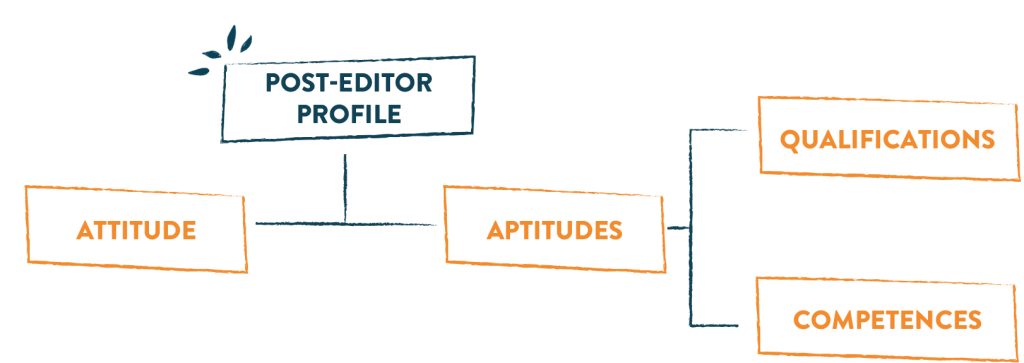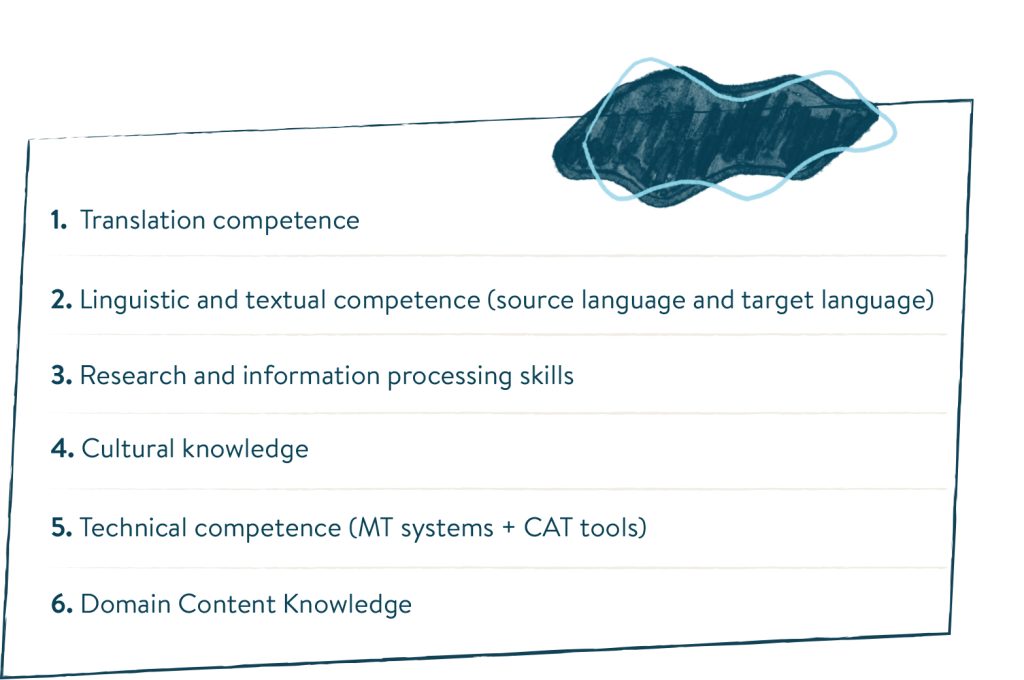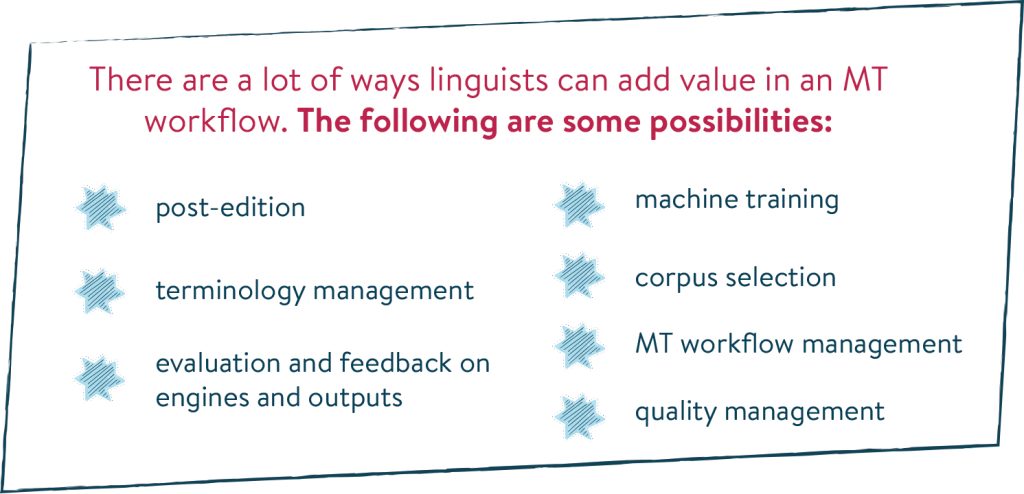The implementation of machine translation (MT) impacts the localization workflow with increased rates of productivity because it reduces delivery times and costs. But it also has other consequences, like redefining the traditional roles that language professionals assume in the industry, such as editor, proofreader, or translator.
One of the most requested tasks in the MT workflow is post-edition, the process of improving a machine translation output. Only certain professionals stand out in this task. They are a specific type of editors that have the required technical, psychological, and linguistic skills. Let’s find out what you need to be an ideal post-editor.

Papers please
First and foremost, a certification in translation, language studies, or linguistics is a must in the profile of a post-editor. If not, as per ISO 18587:2017, the post-editor must have at least five years’ experience in translating or post-editing. These are requirements that intend to guarantee translation service providers work with top-quality professionals.
A whole lot of competences
A quality-oriented translation workflow is rooted in the proper selection of the professionals involved in a project. This is also the case for MT workflows. The following list summarizes the competencies that are part of the ideal post-editor profile.

Post-editors are, like any other translation professional, proficient in both source and target language and culture. They know how to conduct efficient research of terminology and manage the information. Also, they master the specific domains, since this implies an expert understanding of the source text.
Lastly, post-editors must be skilled in IT resources, like CAT tools, but also be acquainted with MT systems. The post-editors that fulfill the required profile know MT models (neural, statistical, example-based, rule-based) and their differences. Furthermore, they are aware of the most common errors in each system. Thus, they can manage more efficiently their attention and spot mistakes quickly.
The two A’s: Aptitude and Attitude

There are differences between the profiles of MT post-editors and TEP editors. Both are detail-oriented linguists, but in addition, post-editors must be fast and efficient, implementing minor and quick changes in the short time provided for the edition.
Moreover, a salient feature of post-editors is their predisposition or flexible attitude. Sometimes language professionals are reluctant to the implementation of MT. But MT is just one solution in the fast-growing translation industry, whose core business remains the same, regardless of its growth or of the MT implementation. Successful post-editors are confident and creative, and they adapt willingly to the new roles the industry has to offer.









